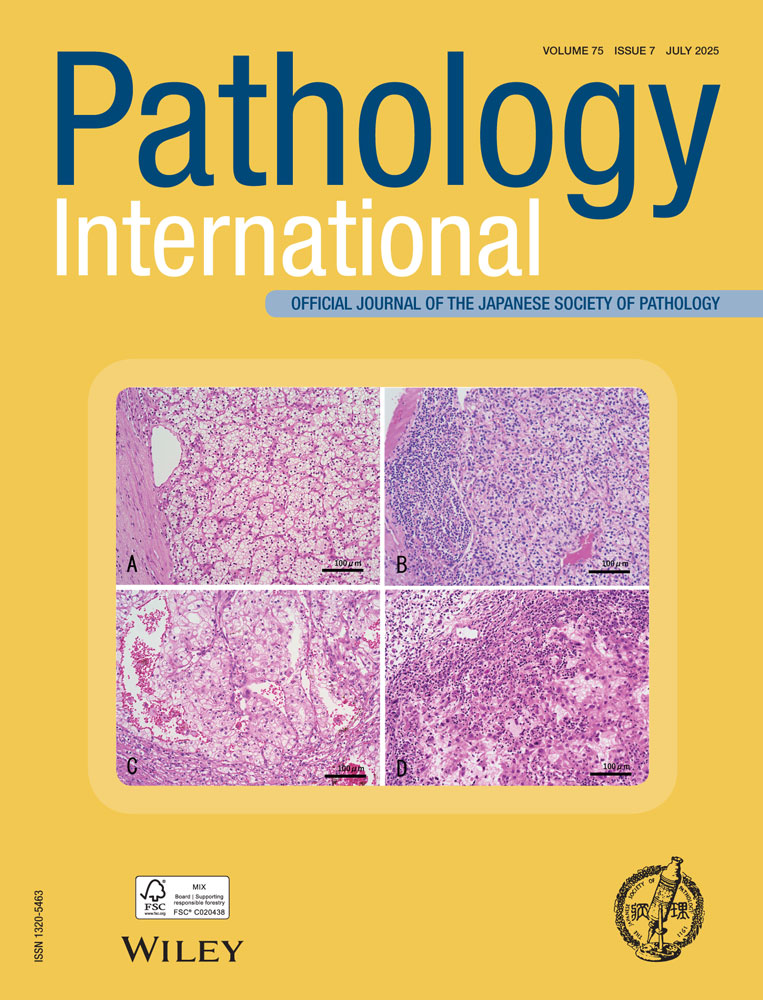Malignant rhabdoid tumor of the vulva: Case report with cytological, immunohistochemical, ultrastructural and DNA ploidy studies and a review of the literature
Abstract
A case of malignant rhabdoid tumor of the vulva in a 25-year-old female was examined. The patient presented with a subcutaneous nodule in the lefl labium majus. Smears of the material obtained by percutaneus fineneedle asplratlon demonstrated clusters of atypical cells with prominent nucleoli. The tumor measured 6 × 5 × 5 cm and appeared tan to brown on the cut surface and partly cystlc. Pathological findings obtalned from intraoperative frozen tlssue sections had been originally interpreted as rhabdomyosar-coma. Light microscopic examination revealed that polyge nal tumor cells having vesicular nuclei with prominent nucleoli were arranged in sheets and the great majority of the tumor cells contained an eosinophillc globular paranu-clear cytoplasmic Inclusion. Ultrastructurally, this cytoplas-mic inclusion corresponds to whirls of intermediate filaments. Vlmentln immunoreactlvity was detected in both the cytoplasm and cytoplamic inclusion of almost all the tumor cells. No cytokeratin and desmin immunoreactivlty were detected In the tumor cells. The Ki-67 labeling index was 36% and the DNA content of the tumor cells, which was examined by image cytometry, demonstrated diploidy (DNA Index = 0.95).




